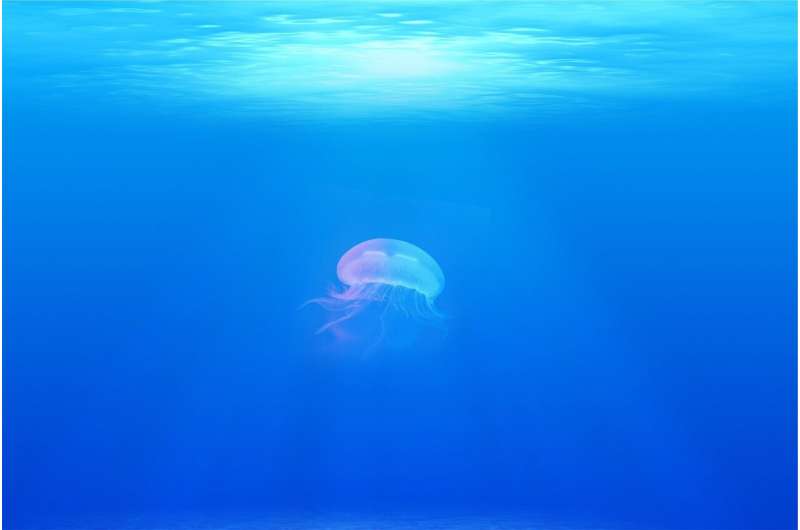Credit: CC0 Public Domain
They contain no carbohydrates. No fats. No proteins. Not much else but water. Still, the moon jellies (Aurelia aurita) are eaten by predators in the sea; fish, crustaceans, sea anemones and even corals and turtles.
Now a new study may explain why these predators bother to eat the gelatinous creatures. The study is based on moon jelly samples from a German Fjord.
"The jellyfish in our study showed to contain some fatty acids that are very valuable for their predators. Fatty acids are vital components of cell membranes and play a crucial role in processes like growth and reproduction," says marine biologist and jellyfish expert, Jamileh Javidpour from University of Southern Denmark.
Two years of fishing jellyfish
Javidpour is Principle Investigator and co-author of the study, published in Journal of Plankton Research. Co-authors are Vanessa Stenvers from University of Groningen and Chi Xupeng from Chinese Academy of Sciences.
The researchers collected moon jellies from North German Kiel Fjord every two weeks for two years. Their content of fatty acids varied with seasons, and variations linked to developmental stages were also found: mature individuals with reproductive tissues had the highest content.
"Jellyfish are likely to be more than just an opportunistic prey to many organisms. It is true that a predator does not get much from eating a single jellyfish, but if it eats many, it will make a difference and provide the predator with valuable fatty acids," she says.
In other words: Low food quality can be weighed up by high food quantity. As an example, researchers have observed a salmon eat a jellyfish 20 times faster than it took for it to eat a shrimp.
So, if the predator doesn't have to spend much energy on eating loads of jellyfish, this preying strategy begins to make sense, she explains:
"Jellyfish often come in shoals and they move slowly through the water. They can't really swim away when predators start eating them."
More jellyfish = more food
On a global scale, marine environments are changing, and an increasing abundance of jellyfish is thought to replace other prey items in the oceans.
"As we see an increase in jellyfish, I suspect that we will also come to see a change in predator populations—especially in areas where the abundances of usual prey items might be endangered by a changing environment," says Javidpour.
Several essential fatty acids were found in the German moon jellies. Among them are the polyunsaturated fatty acids arachidonic acid, eicosapentaenoic acid and docosahexaenoic acid.
More information: Vanessa Stenvers et al, Seasonal variability of the fatty acid composition in Aurelia aurita (Cnidaria: Scyphozoa): implications for gelativore food web studies, Journal of Plankton Research (2020). DOI: 10.1093/plankt/fbaa026
Provided by University of Southern Denmark
























